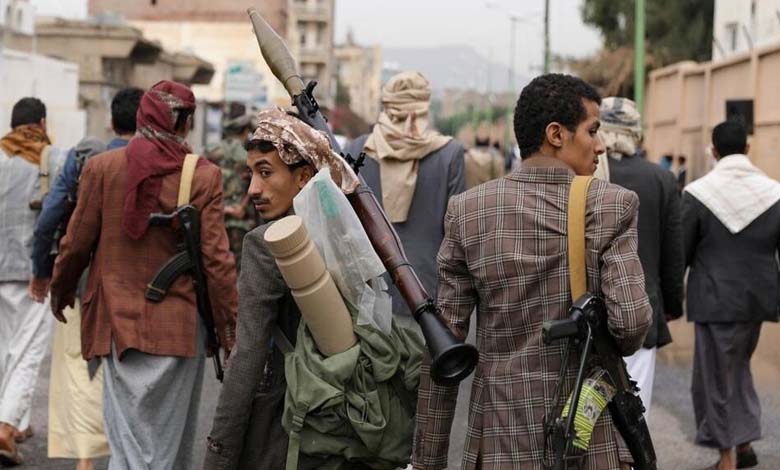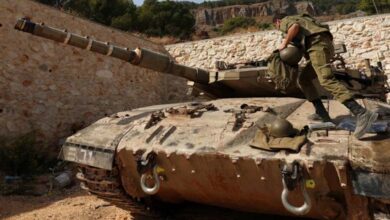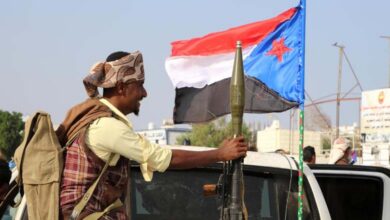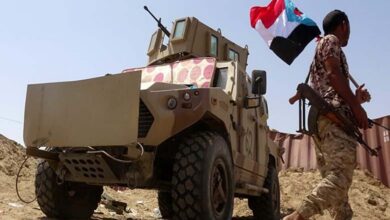The Houthis’ Catastrophe Enters Its Second Decade: A Fireball Burning Yemen

The catastrophe caused by the Houthi militias has entered its second decade, beginning as a fireball from the Maran mountains in Saada, northern Yemen, and spreading westward to Hodeidah on the Red Sea.
-
Terrorism: A Product of the Muslim Brotherhood and the Houthis… Yemenis React to Major Massacres in the South
-
Terrorism: A Product of the Muslim Brotherhood and Houthis… Yemenis React to Large-Scale Massacres in the South
During the first decade of this catastrophe, marked by the invasion of Sanaa on September 21, 2014, the Houthi militias employed various forms of cruelty and brutality to punish their opponents. This included executing tribal leaders, beheading prisoners, killing children from opposing families, and taking hostages to ensure the obedience and submission of tribes.
Recently, this fireball, which has claimed over 300,000 Yemeni lives, has become a serious threat to the region and the world. The coup militias are now undermining regional and international peace, threatening neighboring countries, disrupting navigation in the Red Sea, and targeting commercial ships in the Bab al-Mandeb strait.
-
Houthis Exploit Mawlid in a Way that Distorts Islam: Details
-
Houthi Leaders Trade in Counterfeit Currency
Return of Class System
According to Yemeni experts and politicians, the Houthi catastrophe, now in its second decade, has been the primary cause of numerous violations and practices that disregard legal norms, especially by reinstating a class system.
Jacoub Al-Sufyani, head of the “South 24” Center for Studies and News in Aden, stated that the Houthi catastrophe symbolizes a dark period that began with the seizure of Sanaa and large parts of northern Yemen.
-
The Houthis have established over 400 prisons since their invasion of Sanaa
-
Reverse Trend: Increased Houthi Attacks and Decreased U.S. Strikes
He added that this catastrophe aimed to undo the revolution of September 26, which had overthrown the Imamate regime in northern Yemen in 1962, abolished the class system, and established equality among citizens under a civil system. According to Al-Sufyani, the Houthis reintroduced the class system after the catastrophe, reinforcing their theocratic project and canceling all national holidays to cement racial supremacy and dynastic rule.
Scenes of Tragedy
Yemeni political analyst Bassam Al-Hakimi noted that when discussing the “September 21 catastrophe,” the first thing that comes to mind is death, terrorism, the destruction of mosques and places of worship, homes, and dark prisons.
-
They organize a forum to counter Houthi ideology… The Muslim Brotherhood continues to mislead Yemenis
-
They Were in the Brotherhood’s Stronghold: Arrest of a Houthi Cell on Its Way to Sanaa
Al-Hakimi emphasized that the anniversary of the Houthi catastrophe carries no memories other than the cries of mothers, mourning cities, terrified children, displaced refugees, and mass funeral processions.
He added: “Before us unfolds a series of tragedies, sorrows, and disasters caused by this catastrophe, which is now synonymous with death, loss, and continuous setbacks for a country held hostage by the whims of a racist group that has committed one of the worst crimes against the Yemeni people.”
-
The Houthi Militias Form a New Government… Will the Muslim Brotherhood Be Included?
-
Yemeni Analyst Reveals: Houthi Militias Habitually Target Organizations and Charities
Deprivation of Rights
Human rights reports indicate that Yemen has lost between $170 and $200 billion economically since the Houthi catastrophe in 2014, coinciding with a collective impoverishment policy that has affected over 18,000 civilians, 17,000 of whom were tortured in Houthi death prisons.
Mohamed Noman, head of the Yemen Center for Human Rights Studies, stated that “the Houthi catastrophe has destroyed the aspirations of the Yemeni people across various sectors, undermining their economic, social, and cultural rights, particularly their right to life, security, and social peace.”
-
The Brotherhood Strengthens Its Relationship with the Houthis… What’s New?
-
The Houthis and Somali al- Shabaab: “The Devil’s Alliance” Reaches the Horn of Africa
He added that “tens of thousands of Yemenis have been killed, others disabled, displaced, impoverished, and afflicted by diseases and malnutrition, subjected to repression, arrests, torture, and kidnappings of activists, politicians, women, journalists, lawyers, youth, and children.”
Noman called for the formation of a broad and effective legal front with active participation from women, youth, and civil society to advocate for the Yemeni cause in international forums in support of the victims, taking advantage of the evolving international stance toward the Houthi militias after years of leniency.












